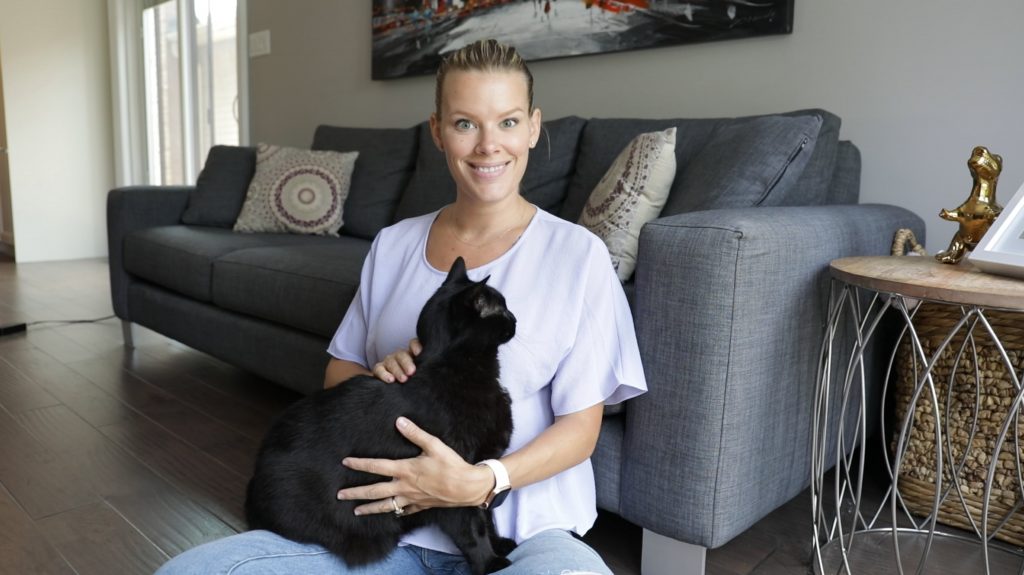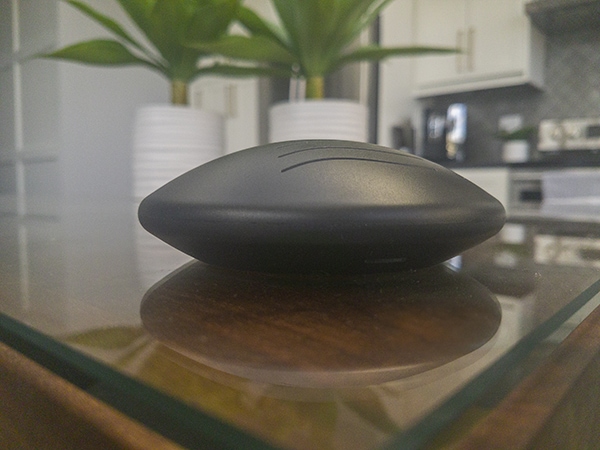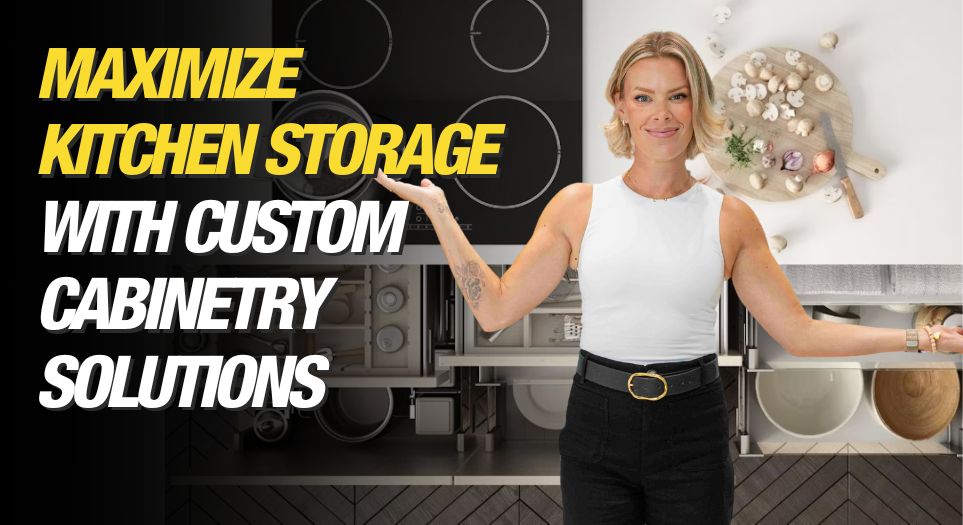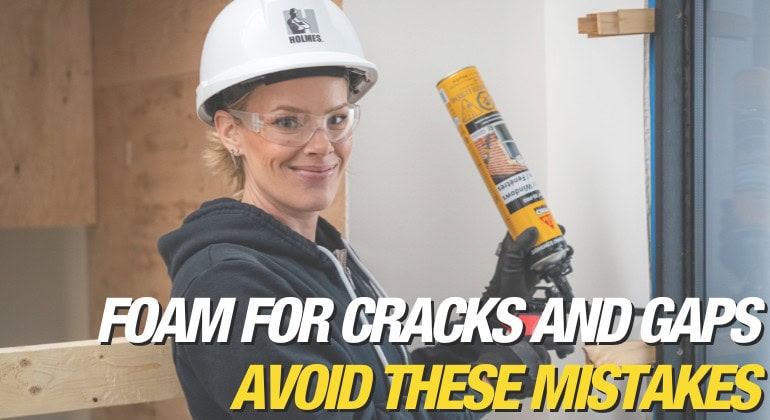Your gutters play a bigger role in protecting your home than most people realize. Be aware of these 9 signs your gutters were installed incorrectly. When they’re installed properly,...

5 Safety Measures To Baby Proof Your Home
By Sherry Holmes
Mike’s Advice / Home Safety & Maintenance
Tuesday, August 4th, 2020 @ 11:35am
When baby is on the way there’s lots to get done! Baby proofing for Cali was a challenge. Many parents know the most common things to secure, like covering electrical outlets and installing baby gates around the house, but there are so many other safety measures to keep in mind when baby proofing your home. You really have to go room by room to babyproof your home.
As babies grow and become more physically active, they also become more curious and enjoy exploring their surroundings, which can, unfortunately, lead to accidents. This is something we want to avoid! And before Cali starts moving around on her own, we made sure to take care of these jobs!
Here are 5 ways you can make your home safer for your little one.
5) Integrating Pets with Baby
For many family pets like my cat Loki, change within the household or environment can bring on anxiety and stress. Think about it, your pet is most likely used to getting all of the attention at home and now your focus and attention will be primarily on baby. If your pet is not already used to babies or children, they can show signs of jealousy.

Pets prefer consistency and routine, just like children. Before baby is born, gradually change your pet’s routine to adapt to the routine that you will be following once baby has arrived.
MY TIP: Get your pet used to the sounds babies make by playing recordings of baby sound throughout your home. To help your pet get used to certain scents, start using baby products like lotion, body wash, and shampoo that you plan to use on baby. If you have a hyper or misbehaved pet, consider enrolling them in obedience training classes or hiring an obedience trainer.
After Cali was born and before we brought her home, I had Blake bring home a baby blanket that she used, so our cat Loki could get used to her scent. This is a great way to get your pet used to baby’s scent before you bring them home and introduce them to the family pet – you can do this with either a baby blanket or baby clothes.
When you bring baby home, remember to never leave baby unattended around your pet, regardless of how gentle or friendly your pet may be – play it safe.
4) Windows
It all starts with the layout. When planning out your baby’s room plan around the bedroom window. Try to avoid placing the baby’s crib or bed directly in front or close to the window, where a baby or child could easily reach or access the window. It’s better to play it safe and prevent any incidents from happening.
Check all of the window locks and safety latches throughout your home and make sure that they work; even if you think they’re out of reach for a baby or child. When they start moving around on their own, it won’t take long for them to get into trouble! To be extra baby safe, you can also install window guards or stops.

If you’re planning to use existing window covers or shop for new ones, choose cordless window coverings, so there’s no chance of choking hazard.
If it’s time to replace your old windows then it might be a good idea to consider purchasing windows with built-in blinds. These are window blinds that are installed between the panes of glass, so they’re out of reach for little hands and pets, protected from dust, completely cordless, and can be controlled by a sliding control handle. Anything that I don’t have to dust is a good choice for me.
3) Tamper-Resistant Receptacles
One way to make your home a safer place and prevent your child from the dangers of electrical shock is to install tamper-resistant receptacles in your home. These receptacles were designed to prevent children from touching or playing with outlets.
They include an internal shutter that blocks foreign objects from being inserted, like clips, bobby pins, or any other small object or toy that a child may try to stick into an outlet. For electrical current to flow, two objects must be inserted in the outlet at the same time.
In some regions of North America, new code requires all newly constructed homes to have tamper-resistant receptacles installed, preventing young children from inserting objects into the outlet that can potentially cause them to receive a shock. For parents in older homes – double check your receptacles and see if you need to make some changes.
Eaton offers a variety of tamper-resistant receptacles that can be installed within the home such as GFCI, USB, floor boxes, nightlights, and more, as well as occupancy and safety sensors, all to provide security, convenience and suit the needs of you and your family.
2) Indoor Air Quality
Do you know that the air we breathe inside our homes can be 2 to 5 times more polluted than the air we breathe outside? Sometimes it can even be 100 times more polluted! It’s hard to imagine but it’s true. Babies and small children are vulnerable to indoor pollutants, like dust, mold, and bacteria.
RELATED
Volatile organic compounds (VOCs) are emitted into the air from all kinds of products that can be found in your home—treated wood products, insulation, candles, air fresheners, adhesives, carpeting, flooring, cleaners, disinfectants, paint, cabinets, and furniture.
The chemicals pollute the air in our home and we breathe it in, leading to potential health risks. When we decorated Cali’s nursery, we opted to use materials that had very little or no VOCs to offgas. It gives me peace of mind to know that when she’s sleeping, she’s breathing good quality air.
That’s why having your indoor air quality tested is important. I recently met a family who had experienced health issues that progressively got worse during a few months. The youngest daughter had gotten so sick that she had to be hospitalized due to complications with her respiratory system.
After meeting with doctors, and trying to find the source of their health issues, the family decided to get an indoor air quality test and discovered mold growing throughout their home. This was something they never expected.
1) Radon Testing
What many people don’t realize are the long-term effects of radon and what it can have on them, their family and even their pets. Radon exists in almost every home and building. It is the leading cause of lung cancer in non-smokers. Want to know if you have radon in your home?
One of the ways you can do this is to have your home tested for radon, which is exactly what Blake and I did. We knew that to provide our daughter Cali with a safe and healthy home, one of the things that we would need to do is have our home tested for radon.
It’s as easy as purchasing a radon test kit, like those offered by Radon Environmental Management Corp. or hiring a certified radon professional or inspector.

We’re glad we had our home tested because our test results showed high levels of radon within our home.
We knew we had to take action, so we found out what our options were and had a radon mitigation system installed in our basement.
We had the house tested when we first moved in – and mitigated accordingly. Health Canada recommends testing every couple of years, so when we found out I was expecting, even though we’d already taken steps to mitigate, we did another test.
RELATED
When it comes to safety, there are no short cuts. And when it comes to your kids, you can never be too careful. Take as many precautions as you can and make your home safe for your family. If you’re planning a renovation, have a discussion with your contractor and make sure they keep the workspace clean and tidy. Little ones are drawn to shiny tools, so make sure that anything dangerous– drills, saws, tiny screws, glues, adhesives, paint – you name it, are out of reach.
READ NEXT
Some awesome décor and design ideas for your kid’s room and nursery.








